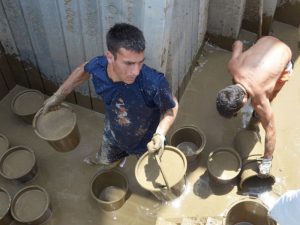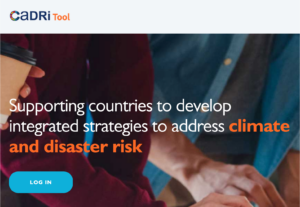Enhancing Capacity Development Services to Countries at Risk of Disasters
 Our planet, circumstances, needs and choices have always evolved and changed. Risk is part of our collective human experience. Ironically, in this age of data, information and connectivity, even though we can quantify more of what was previously uncertain, it makes apparent how much more we don’t know. There will be greater uncertainty with which we must contend. Uncertainty and surprise create discomfort (we humans crave control), but also opportunity.
Our planet, circumstances, needs and choices have always evolved and changed. Risk is part of our collective human experience. Ironically, in this age of data, information and connectivity, even though we can quantify more of what was previously uncertain, it makes apparent how much more we don’t know. There will be greater uncertainty with which we must contend. Uncertainty and surprise create discomfort (we humans crave control), but also opportunity.
Although difficult, accepting uncertainty and understanding that we cannot presume to control all change is imperative. It is also a more honest description of the world beyond simplified metrics. This acknowledgement must shape behaviour to come. Extreme changes in planetary and socioecological systems are happening now; we no longer have the luxury of procrastination.
Is that reflected in the way we prepare for disasters? Unfortunately, the world has been unable to move away from a vicious cycle of disaster–respond–rebuild–repeat. Financing has historically focused on picking up the pieces post-disaster. Development assistance for risk reduction has been highly volatile and marginal, and dwarfed by financing for disaster response. A total of  $5.2 billion for disaster risk reduction between 2005 and 2017 represents a marginal fraction (3.8%) of the total amount of overseas development assistance (for more info: Global Assessment Report on Disaster Risk Reduction 2019). In general, post-shock assistance (i.e. for disaster response, reconstruction, rehabilitation and recovery) dominates at the expense of funding dedicated to understanding the underlying vulnerabilities contributing to risk and to reducing them. Global resource requirements to deal with growing risk are increasing faster than national and international capacities to meet them, leaving millions of affected people behind.
$5.2 billion for disaster risk reduction between 2005 and 2017 represents a marginal fraction (3.8%) of the total amount of overseas development assistance (for more info: Global Assessment Report on Disaster Risk Reduction 2019). In general, post-shock assistance (i.e. for disaster response, reconstruction, rehabilitation and recovery) dominates at the expense of funding dedicated to understanding the underlying vulnerabilities contributing to risk and to reducing them. Global resource requirements to deal with growing risk are increasing faster than national and international capacities to meet them, leaving millions of affected people behind.
 In order to change this, we must move away from short-sighted, segmented planning and implementation to transdisciplinary, collaborative approaches that build resilience (e.g. approaches that promote local and diverse food systems that fully meet the requirements for human dietary health for all in a stable manner) and that regenerate relevant resources, avoiding both expected and unexpected negative consequences. An important and continuous component in doing so is the development of national capacities and the meaningful alignment of international ones. This starts with a holistic and smart way of assessing which capacities are in place and which need to be developed in the future.
In order to change this, we must move away from short-sighted, segmented planning and implementation to transdisciplinary, collaborative approaches that build resilience (e.g. approaches that promote local and diverse food systems that fully meet the requirements for human dietary health for all in a stable manner) and that regenerate relevant resources, avoiding both expected and unexpected negative consequences. An important and continuous component in doing so is the development of national capacities and the meaningful alignment of international ones. This starts with a holistic and smart way of assessing which capacities are in place and which need to be developed in the future.
In 2019 and 2020, PlanAdapt collaborated along those lines with the Capacity for Disaster Reduction Initiative (CADRI), a global partnership composed of 17 UN and non-UN organizations, to strengthen CADRI’s capacity development services. In particular, PlanAdapt helped to develop the so-called new CADRI tool, that allows for the design, planning and implementation capacity diagnosis missions, which can be comprehensive or focused on specific sectors and hazards.
